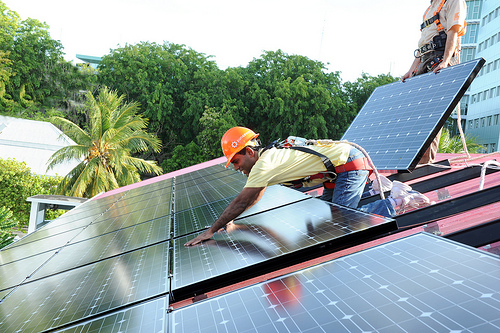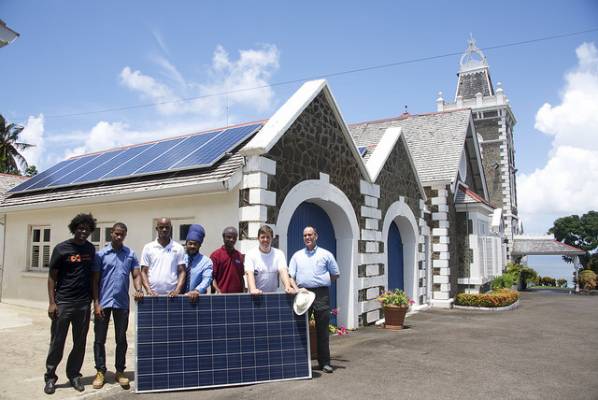Saint Lucia is a small island nation in the sunny Caribbean. While the natural scenery is breathtaking, this pristine island currently depends on dirty diesel generators to provide energy for its 174,000 inhabitants. This is set to change, and the island of Saint Lucia is committing to clean, renewable energy sources.
Saint Lucia was one of the 15 climate vulnerable countries which together became the first nations to ratify the Paris Agreement in April 2016. It is also part of a group of 51 countries referred to in the UNFCCC as SIDS, an acronym that stands for Small Island Developing States. Around the world, these countries face similar development challenges and are already suffering damage from rising sea levels and increasingly strong and frequent tropical storms.
The government of Saint Lucia has a target of generating 35% of its electricity from renewable sources by 2020. To achieve it, the country needs to revolutionize its economy with solar, wind, and geothermal energy.
In the words of Bill McKibben, in the Caribbean “both the crisis of climate change and it is obvious solution are so close at hand.” So, in an island famous for its sunshine, solar represents the easiest attainable resource. At the Paris COP21, in December 2015, the Government of Saint Lucia announced its intention to install solar PV panels on the Government House, public residence of the Governor-General.
They are doing so this week, in partnership with Solar Head of State, a nonprofit that helps world leaders become role models in environmental stewardship by encouraging the adoption of solar PV on prominent government buildings. In another climate vulnerable island country, former Maldives President Mohamed Nasheed became the first solar head of state when he put an 11.5kW solar system on his Presidential Palace in 2010.

Installation of solar panels on the presidential residence in the Maldives, in 2010. Photo: Mohammed Ali
At the utility scale, the government of Saint Lucia, in collaboration with the local electricity utility, is currently completing the bidding process on its first installation — a 3MW solar PV facility that will power 5-8% of the national energy demand.
Switching to renewable energy sources will also help to reduce energy costs for citizens of Saint Lucia which, like in most island nations, suffer from astronomically high electricity costs that hinder economic development. The increased demand for solar technicians will help create and keep skilled jobs in the island.
Reducing Saint Lucia’s emissions alone will not have a large impact on climate change, as the country is accountable for just 0.0015% of global carbon emissions. But by leading on renewable energy, climate vulnerable countries can take a strong moral stance and showcase solutions for larger nations to follow.
The solar heads of state are set to multiply in the coming year, with a roll-out plan that includes five small states in the Caribbean before the campaign expands into Asia and the Pacific islands towards the end of 2017 and beyond. Like the solar energy entrepreneur and supporter of Solar Heads of State, Danny Kennedy pointed out “It’s one roof today, but will be many over the years ahead. The rooftop revolution has come to Saint Lucia.”

Photo provided by Solar Head of State.